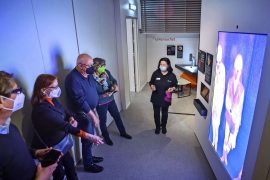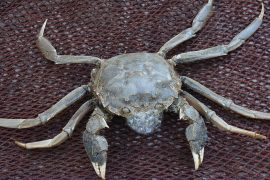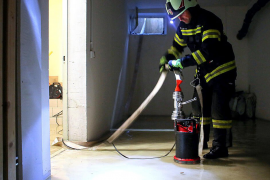navigation system of immune cells
How do the immune system’s defense cells succeed in tracking down or getting to pathogens or tumor cells as quickly as possible? How do immune cells know whether pathogens are present? A German research team investigated these questions and showed that immune cells use chemical markers to create a sort of navigation system in the body.
Researchers at the University of Saarland have used a statistical method to show how immune cells use certain markings to track pathogens and tumor cells, or to declare a previously unexplored area. The results were recently published in the specialist journal “physical review paper” Presented.
What strategy do immune cells use to search the body?
Some immune cells move around the body looking for invaders or tumor cells. If every single immune cell randomly searches the body for pathogens, the chances are high that some areas will be searched more than once and others not at all. It is already known that immune cells use chemical markers as a kind of signpost to pass on certain information, but the exact strategy for thinning is still unclear.
through the desert with metal detector
“Imagine you’re in a desert looking for nuggets with a metal detector,” says Professor Heiko Rieger, likening the problem to the way the body’s own defense cells go looking for intruders. According to the scientist, there would be no point in walking on predetermined paths nor walking everywhere randomly.
race against time
However, an efficient process is extremely important for the immune system so that pathogens do not multiply suddenly or tumor cells grow uncontrollably. So the researchers sought to understand when an immune cell is particularly efficient at spotting harmful intruders and tumor cells.
“memory” of immune cells
The working group paid special attention to the “memory” of cells. It refers to special biochemical markings that are placed by immune cells to mark locations in the body. These symbols can have different functions. Either they attract additional immune cells to support them to eliminate any intruders or tumor cells, or the marking indicates an area that has already been explored.
According to the research group, a precise understanding of this mechanism could reveal far-reaching insights into processes in the body that could lead to better treatments against cancer and infectious diseases.
Model Calculated Process of Immune Cells
“From a mathematical point of view, such memory processes are often difficult to determine and predict,” Dr. Hughes Mayer. To this end, two experts developed a computer model that simulates the action of cells to identify the most efficient approach. “Indeed, we were able to measure the efficiency of such processes in computer models,” said Dr. Mayor.
simple command…
Simulations conducted by two physicists were able to predict which path a cell would take to find its enemy. “It turns out that search is most efficient when the cell – or a so-called search agent in our simulations – has simple instructions along its way such as ‘two steps to the left, then three steps to the right’ followed by well-defined probabilities, The mayor explains.
… added with ease
According to the researchers, the cell “has to ignore a signal from time to time” in order to be as efficient as possible. When compared with the prospector, this would mean that he is going to the area he heard there is gold, but then deviates from the path to the site so that he cannot see that Where is everyone looking? “With this strategy and already with the reminder of the previous two steps, the average time to find a target is reduced by more than 50 percent compared to a blind random search,” says the physicist.
Mixing strategies strikes balance
“If the cell ignores chemical clues, it will search blindly and inefficiently,” the two scientists summarize. If she is too dependent on a signal, she tends to walk in straight lines and is also less efficient. Combining these two strategies strikes the right balance. (VB)
Author and source information
This text complies with the requirements of specialist medical literature, medical guidelines and current studies and has been checked by medical professionals.
Author:
Diploma-Editor (FH) Volker Blasek
hilarious:
- Saarland University: Researchers find ideal way to search body cells for pathogens and tumor cells (Published: 13.08.2021), uni-saarland.de
- Meyer, H., Rieger, H.: Optimal non-Markovian search strategies with N-step memory; Physical. Rev. 2021, journals.aps.org
Important Articles:
This article is for general guidance only and is not intended to be used for self-diagnosis or self-treatment. He cannot take the place of visiting the doctor.

Web guru. Amateur thinker. Unapologetic problem solver. Zombie expert. Hipster-friendly travel geek. Social mediaholic.





